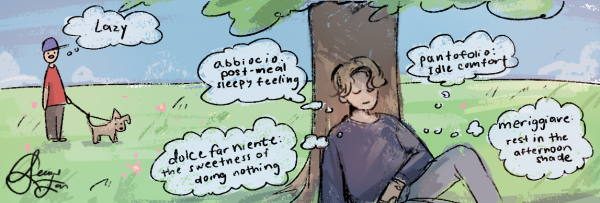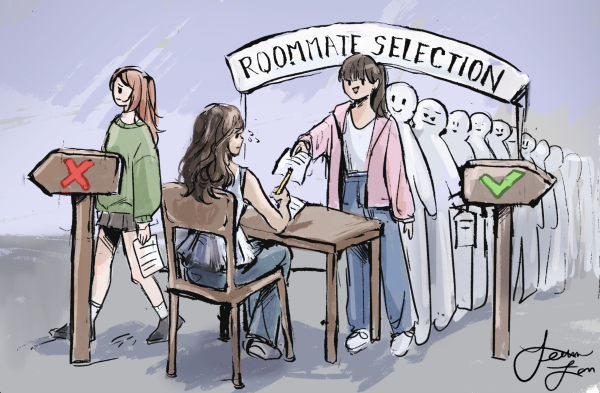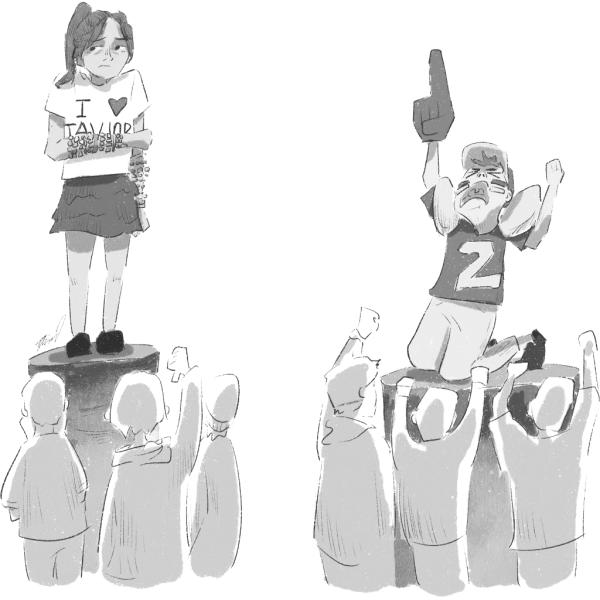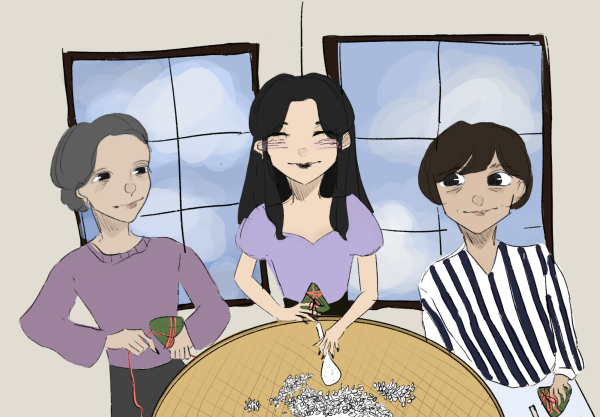The original Mister Rogers Neighborhood is far superior to the animated remake
November 18, 2022
Mister Rogers walks through the front door of his house into a homey room with curtained windows and colorful walls. He begins to sing the intro song, “Won’t You Be My Neighbor” as he takes off his suit jacket and places it on a hanger in the coat closet. He then puts on a zip-up sweater and changes his dress shoes to comfortable sneakers.
This sequence, lasting only 83 seconds, sets the caring and amiable mood for the rest of the 30-minute episode in which Mister Rogers will foster a connection with his young audience.
First airing in 1968, the show was revolutionary. Mister Rogers’ Neighborhood broke barriers and faced raw, societal issues such as racism, ableism, and more that were rarely addressed in kids’ shows.
PBS more recently created a spin-off show titled Daniel Tiger’s Neighborhood in 2012 that features an animated, young tiger as the main character. The show still airs today and is loved by many parents who claim it is unlike any other children’s television program and a perfect evolution of the original show. However, I disagree. This animated series is nothing like Mister Rogers’ Neighborhood and the differences between the two series are clear.
Even down to the very music, the new series lacks the spirit of the old. In Mister Rogers’ Neighborhood, the intro song is sung live each time the program begins—it’s not recorded—which allows Mister Rogers to add in changes each time he sings. Sometimes he elongates syllables to be in sync with the zipping of his sweater or pauses to look at the camera as if he’s looking into the eyes of his viewers. Much the way our parents do after work, Mister Rogers enters our homes and settles into a comfortable sweater to prepare for a friendly chat with us, his neighbor. In stark contrast, Daniel Tiger only sings certain small parts of the intro song, and an outside narrator sings most of it, disconnecting the lyrics and message of the song from the character of Daniel Tiger. Since the show is animated, the characters’ mouths don’t move naturally and therefore don’t always look like they are actually saying the words that I hear, which also disconnects the dialogue from the characters and makes them less familiar.
When I listen to Mister Rogers sing and speak, I can’t help but feel like he is speaking directly to me, like he’s reaching through the screen and asking me, and only me, to be his neighbor. This feeling of genuine care is one that continues throughout the program as Mister Rogers gently explains complex and emotional topics with love and a smile. Listening to a familiar, friendly face talk about a challenging topic is far more palatable than having to hear it from a stranger, and Mister Rogers creates this friend-like relationship with his viewers so that he can talk about vulnerable, hard things with them.
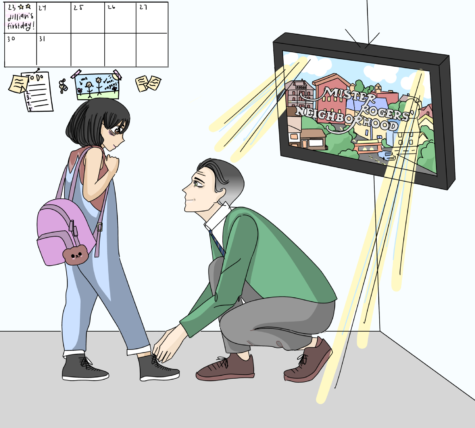
Something so refreshing about the original show is that the scenes are filmed in one take without abrupt cuts, so small imperfections are left in. He stumbles over words, drops things, and allows his child guests to ramble on without a script. Mister Rogers’ Neighborhood feels very real, and thus, it is something that viewers can identify with as they navigate through their own life conflicts. Because of the authenticity of the live-action filming, Mister Rogers’ unique experiences, challenges, and triumphs are ones that viewers can relate to.
In the remake, Daniel Tiger is presumably represented as a child tiger so that he can be more relatable to young child viewers, but the use of animation, and worse, an animated animal instead of human, completely disconnects the character’s experience from any human experience. In the original show, Mister Rogers was a figure of comfort and an adult role model, but the child-like character of Daniel Tiger isn’t mature and he acts like your typical preschool child. While that may appeal to some children, in my opinion, the comfort from Mister Rogers was so special because that wasn’t something a childhood friend could provide.
Looking back at Mister Rogers’ Neighborhood as our world is pushed deeper into a digital age, I place a much higher value on the human-to-human connection formed between Mister Rogers and his viewers.
This can best be seen through the difference in how emotion is portrayed. Daniel Tiger’s eyebrow, eye, and body placements exaggerate his emotion. He throws himself on the floor when disappointed and large, blue tears fly out of his eyes when he’s sad. On the other hand, Mister Rogers portrays his emotions naturally—the way most normal humans show how they feel.
In one memorable scene, Mister Rogers’ goldfish dies and he sits on the grass in his backyard burying the fish. He speaks directly to the camera, placed low to meet his eyes at the height of a child, as he reminisces about his childhood pet dog who passed away. He discusses how it’s okay to feel sad and he smiles as he shares stories of his beloved pet. This compassionate interaction is not only relatable for many children but also teaches them that it’s normal to feel sad and how to cope with the death of a loved one in a healthy way. Mister Rogers was able to teach his viewers how to express their own emotions and also how to decipher other people’s emotions through showing his own. At the end of the scene, he sings a song with the lyrics, “Sometimes people get sad and they really do feel bad. But the very same people who are sad sometimes, are the very same people who are glad sometimes. It’s funny but it’s true. It’s the same, isn’t it, for me. Isn’t it the same for you?”
After 905 episodes, Mister Rogers’ Neighborhood ended in 2001. But, the show’s legacy lives on in all the young children it comforted and inspired.



